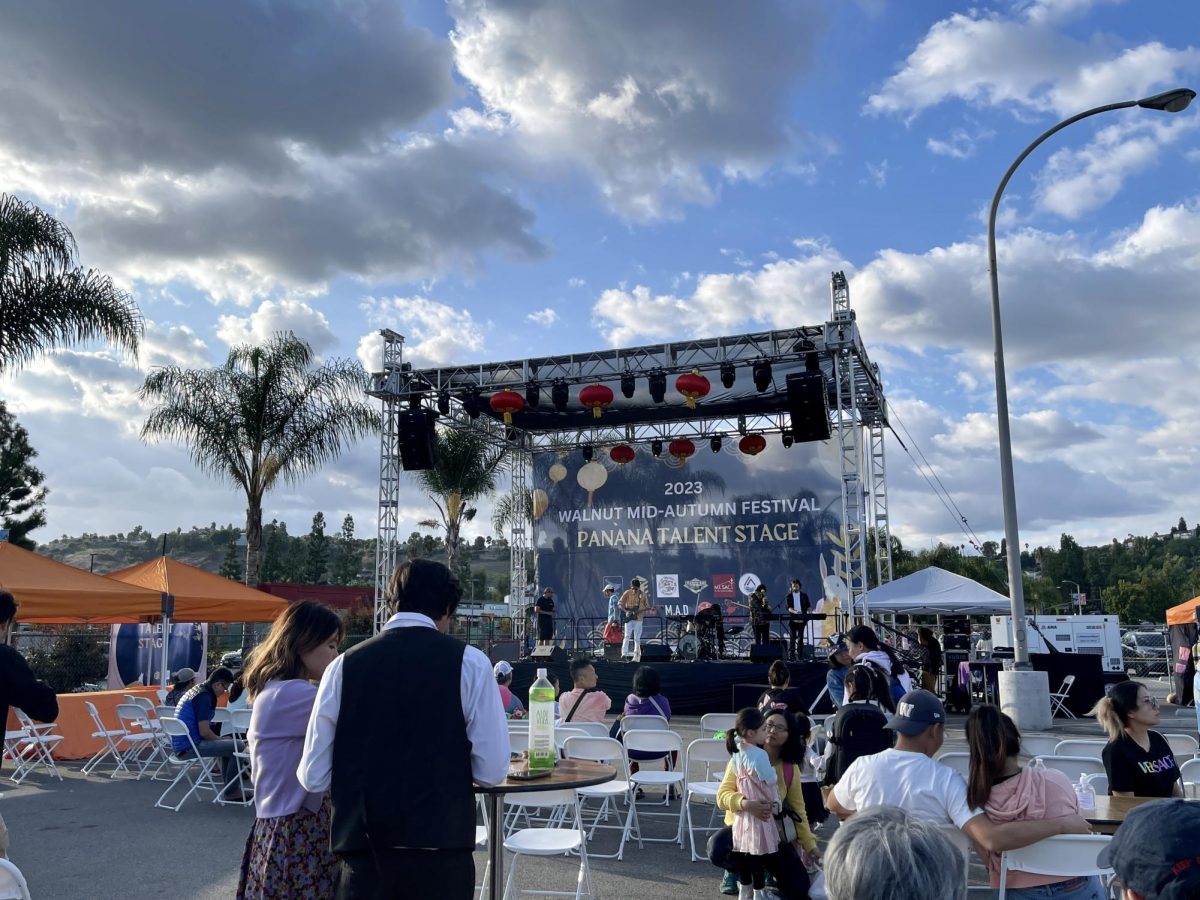The Mid-Autumn Festival, also known as the Moon Festival, brought families, friends and the community together for a weekend event to rejoice at Mt. SAC.
After reserving a free ticket online for the festival, the community of Walnut and Mt. SAC students could buy food and crafts from local vendors, attend a talent show and experience all the festival’s traditions with many others.
The Moon Festival is an all-day joyous occasion celebrated with traditional and cultural dances, mooncakes, brilliantly colorful lanterns and the night sky’s bright full moon. This is not a new holiday. This tradition has existed for more than 3000 years, dating back to the emperors of China who worshiped the full moon and thanked it for its prolific harvests.
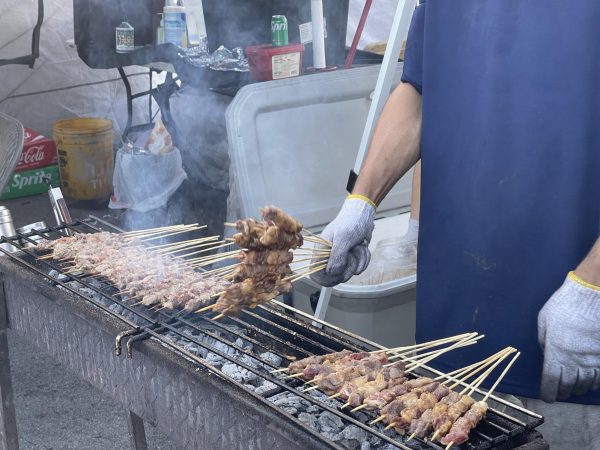
Vendors were at their stations ready on Sept. 30 and Oct.1 at 11 a.m. to greet welcomed guests and stayed until the festivities ended at 8 p.m.
One vendor worked carefully over a heated metal slab as she poured melted sugar onto it. She created an outline of her animal, added the legs and sculpted in some eyes while utilizing only a spoon and a spatula.
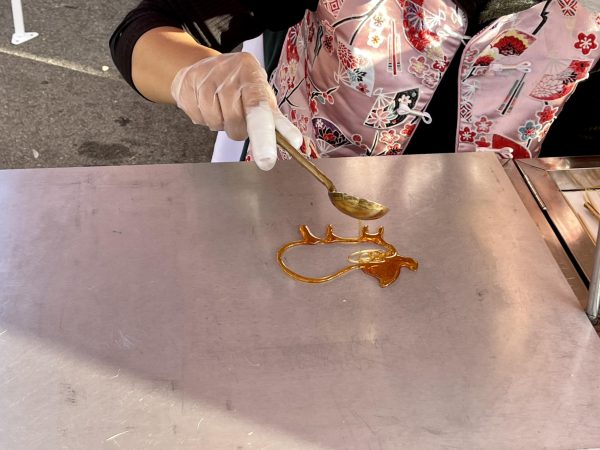
A styrofoam holder for all of her sugar creations sat next to her. Atop the holder was her biggest piece, a dragon whose hairs flowed in the wind as patrons walked by.
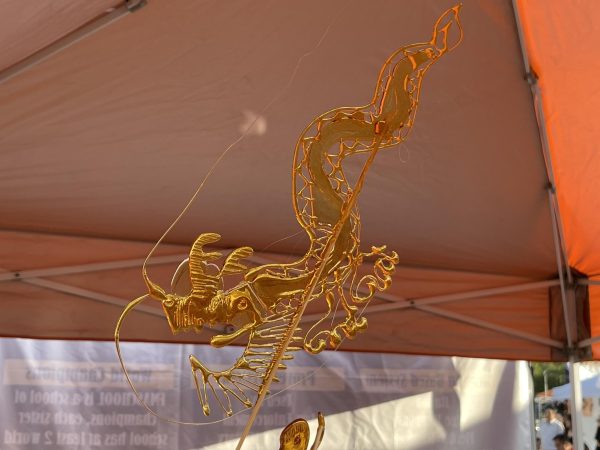
The woman carefully placed her recently finished masterpiece into the styrofoam holder and continued working meticulously on her next piece.
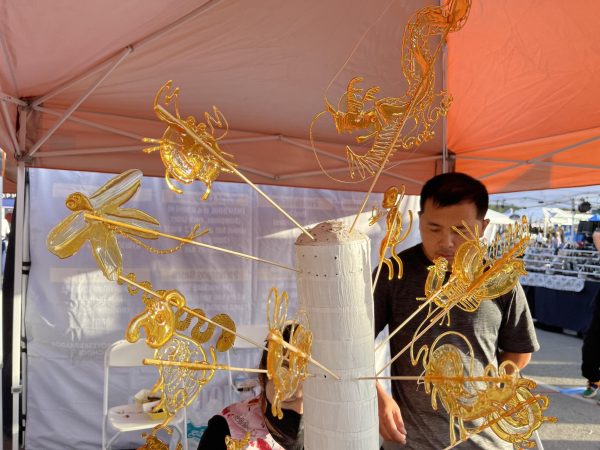
Learning about the festival’s history shines a brighter light on the moon’s symbolism and the importance of creating meaningful connections. The legend behind the Moon Festival began in Chinese mythology with a hopeful love story between husband and wife, Hou Yi and Chang’e.
Multiple versions of this tale lead up to Chang’e journeying to the moon and leaving Hou Yi to become saddened in her absence. To help deal with his wife’s departure, Hou Yi would arrange a table of fruits and create round-shaped cakes for the person he deeply yearned for, hoping that one day they would reunite when the moon was at its fullest and brightest.
One year later, the couple was finally reunited on the 15th day of the eighth month, which is now known as the autumnal equinox’s full moon.
The date of the mid-autumn festival is determined by the Chinese lunisolar calendar and not the modern-day Gregorian calendar; the date never seems consistent and changes year after year.
Officially, the Mid-Autumn Festival’s date is celebrated during a full moon of the autumnal equinox: the 15th day of the eighth month, when Chang’e shines the moon at its brightest for her lover.
There is no better way to connect families and friends than a celebration wishing good fortune.
The legend was cemented in history and the tradition of the Moon Festival was born.
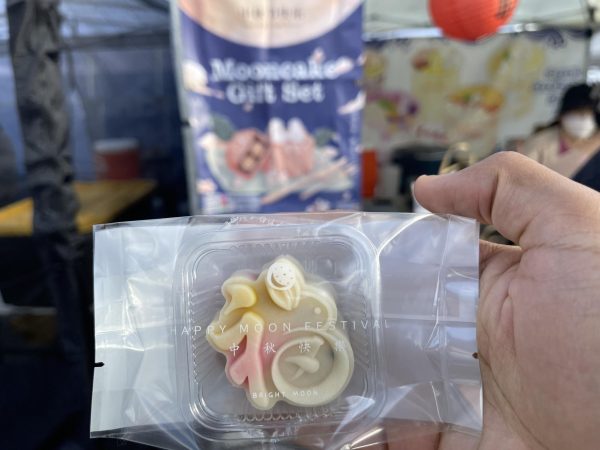
The round-shaped cakes that Hou Yi made for his loved one birthed the famous tradition of gifting mooncakes to one another.
Fast forward to the present day and colorful lanterns could be seen illuminating the night sky above as they rise to join the full moon’s glimmer.
Lady Chang’e and Hou Yi’s story is one of thankfulness, community and rejoice adopted into the lifestyles of many dynasties and is still present in Asian cultures today.
Besides China, many Southeastern and West Asian countries like Vietnam, Taiwan and Malaysia all celebrate this festival and each has their own different names.
One feature stayed congruent between Mt.SAC’s Mid-Autumn Festival and its predecessors: people came together with the intent to simply celebrate the wonders of the natural world and show appreciation to those around us.
Festivals are perfect for rekindling relationships, creating meaningful connections and eating delicious food.


